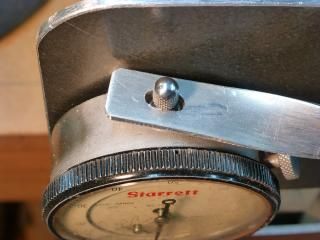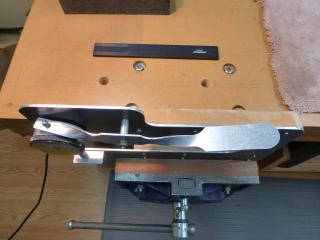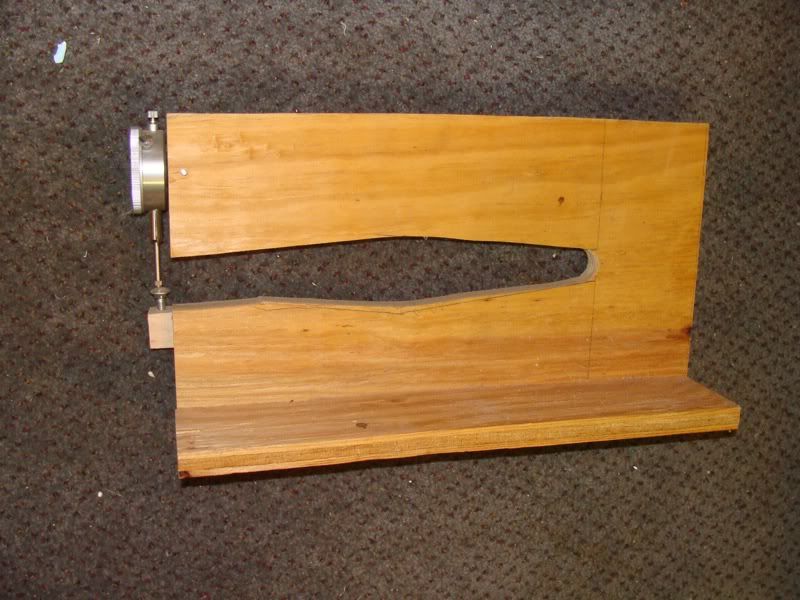Page 2 of 2
Re: DIY Thickness caliper
Posted: Wed Nov 26, 2014 9:12 pm
by Tom West
Ken: Thanks, but no to the drawing, it was done on the fly. Just flat aluminum stock with a couple of 90 degree twists and a few bends. The indicator has a screw on button on the top. Put an elongated slot in the lever handle and it sits under the button. The spring loading of the indicator is enough to cause return. From the picture you can see the stock was slimed down to allow the 90 degree twists. The mounting screw for the handle is on a stand off that is about 5/8" long. The frame itself is .125" aluminum plate stock stiffened with some MDF on the back side. Years ago I was involved with ham radio and gathered a lot of electric bits and pieces from a local chap who did a lot of military surplus salvage. Most of the bit and pieces came from those ventures. They have served me well over the years. Take care.
Tom
Re: DIY Thickness caliper
Posted: Thu Nov 27, 2014 10:49 am
by Tom West


Ken: This may help.
Tom
Re: DIY Thickness caliper
Posted: Thu Nov 27, 2014 11:09 am
by Dan Pennington
Here's my thickness measurer. Scrap plywood, a round headed carriage bolt, and a dial indicator. No lifting lever, but it does just fine for the occasional guitar wood that I thickness sand.

Re: DIY Thickness caliper
Posted: Fri Nov 11, 2016 7:03 pm
by jonjoseph
The aluminium extrusions looked familiar . So did the plywood model . I made a plywood thing where a screw would push a hacksaw blade upwards .The blade was filed to a point and a makeshift readout was marked on the plywood after testing various measured objects like drill bits .Then I moved away from just measuring the thickness and made a much more useful tool . This was for thicknessing violin plates. There is a Meccano wheel (about 1 inch diameter ) with rubber tyre which rolls on one face. The opposite face is marked by a sharp blade . It is normally open due to a spring . (That`s a nappy safety pin bent to shape . There is a depth screw to adjust the closed thickness. It`s hand held and makes a series of scratches as the tool is pulled across the wood. The blade sharpened to a curve is from a purfling groove marker .With the correct light source you simply scribble over the scratches and then use a small plane to remove the wood . All on a different scale to guitar making but it would work for cello making too . Maker Vicente Tatay used the thicknesses of a Nickel and a Dime .Owners love his guitars .
Re: DIY Thickness caliper
Posted: Sat Nov 12, 2016 9:54 am
by ken cierp
Jon --- pictures would be helpful --- thanks


